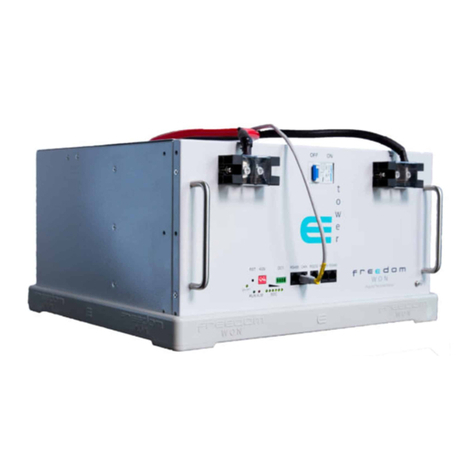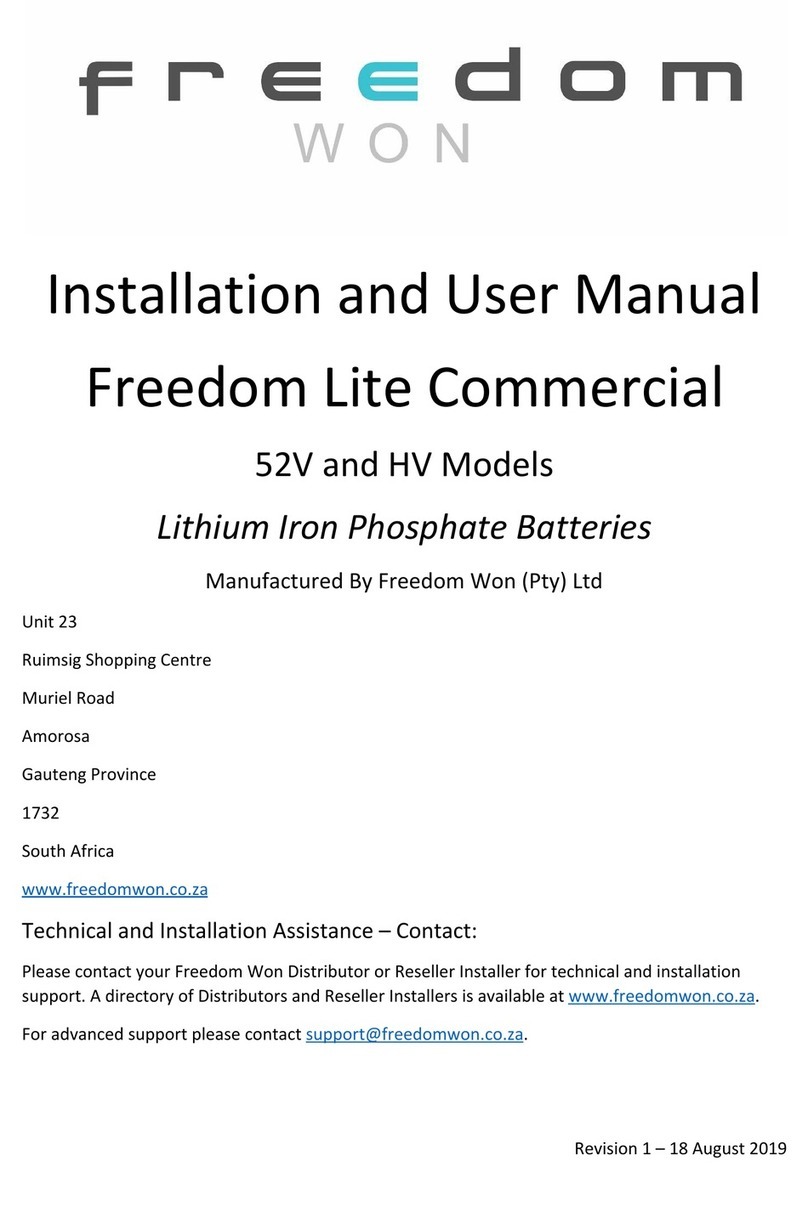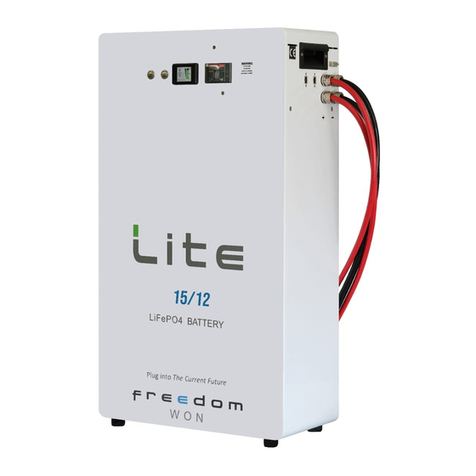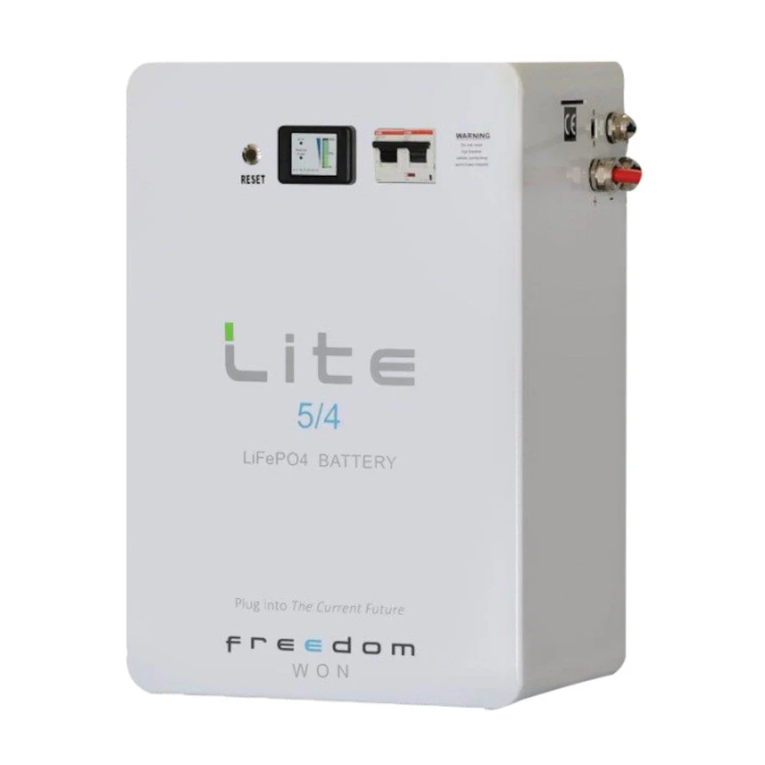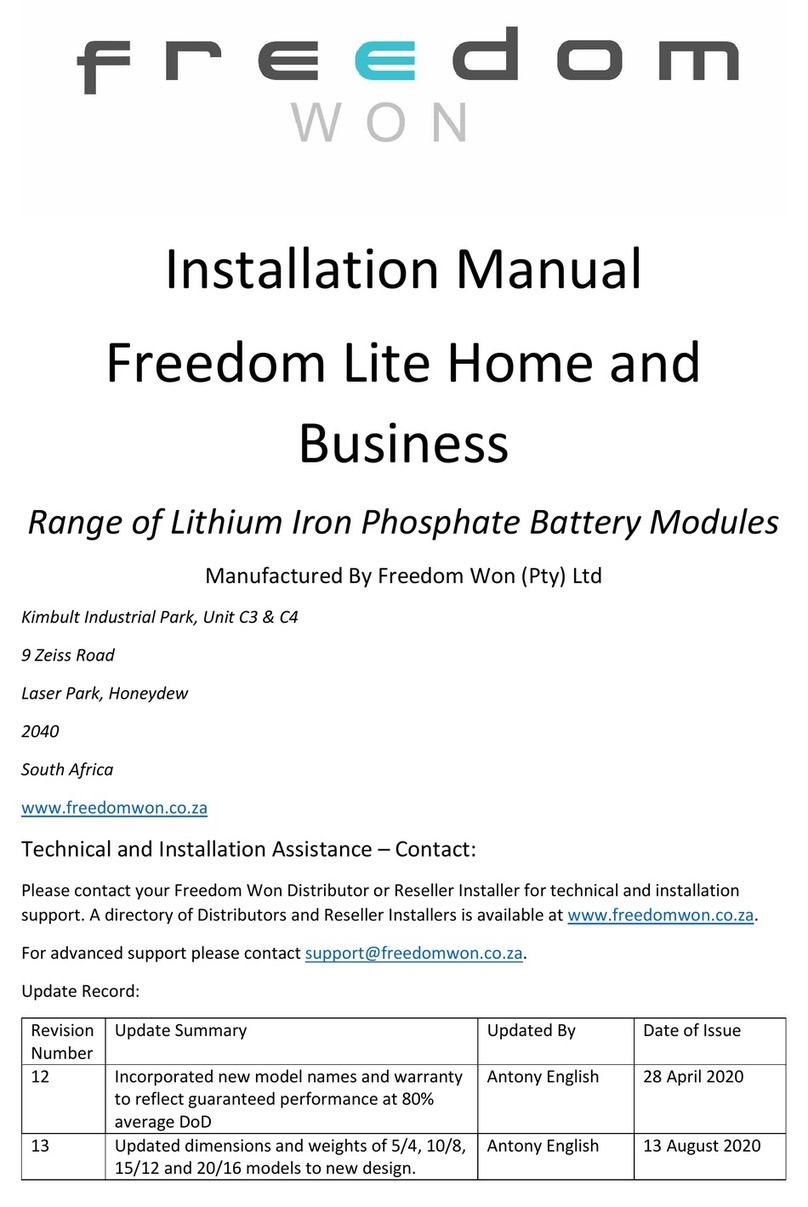
Freedom Lite Commercial Installation Manual Revision 3
P a g e 8 | 29
Table 2.1 Freedom Lite Commercial 52V Range Overview
Freedom Lite Commercial 100/80 120/96 140/112 160/128 200/160 300/240 400/320 500/400 600/480 700/560
Total Energy Capacity
[kWh] 100 120 140 160 200 300 400 500 600 700
80% DoD Energy [kWh] 80 96 112 128 160 240 320 400 480 560
90% DoD Energy [kWh] 90 108 126 144 180 270 360 450 540 630
Current Capacity [Ah] 2 000 2 400 2 800 3 200 4 000 6 000 8 000 10 000 12 000 14 000
Max. Cont. Charge and
Discharge Current (1) [A] 2 000 2 000 2 400 2 400 2 400 2 800 2 800 2 800 2 800 2 800
Max. Cont. Charge &
Discharge Power (1) [kW] 100 100 120 120 120 140 140 140 140 140
Nominal Voltage (2) [V] 52
Max. Inverter Cap. [kVA] 90 90 108 108 108 135 135 135 135 135
Total Weight [kg] 1 040 1 250 1 500 1 700 2 200 3 300 4 300 5 300 6 300 7 400
Height [mm] 2 100
Depth (from wall) [mm] 350 750
Length (width along wall)
[mm] 1 400 1 850 2 300 2 750 3 200 4 600 3 300 4 300 4 700 5 600
DC Connection – Fly
Leads, [no. per electrode]
(3) [mm2]
3x120 3x120 4x120 4x120 4x120 6x120 6x120 6x120 6x120 6x120
Round Trip Efficiency 96-97%
Enclosure 3mm thick Aluminium, powder coated, tamper proof, indoor use
External Interface CAN Bus
On-board Management Comprehensive battery management system and internal trip protection
Human Interfaces On and Off Buttons, State of Charge Display (0 to 100%), Error light, Error Reset Button, CANdapter for Programming and
data access with PC, main breaker
Protection Shunt Trip Circuit Breaker sized to suit max current, tripped by BMS if critical fault, manual reset. Protection for
overcurrent, cell under and over voltage, temperature, weak cell detection and other critical events
Battery Chemistry Lithium Iron Phosphate (LiFePO4)
Cell Form Factor Large Format ultra-heavy-duty prismatic cells of 200Ah each and 3,2V nominal voltage, fully sealed in plastic casing with
bolt on electrode connections
Battery Cooling Natural Convection (heat generation is negligible inside the battery)
Suitable Ambient Temp
[°C] 0°C to +40°C
Extreme Operating Temp
[°C] (4) -20°C to +60°C
Remote Monitoring Real time data logging and transmission via WiFi to online portal of key battery information
Warranty (5) 10 years or 4 000 cycles for average 80% DoD, and max 90% DoD
Design Life – Cycles >16 years (>5 500 cycles) expected life at 80% DoD per cycle, >20 years (>7 500 cycles) at 50% DoD
Notes to Specification Sheet:
1. The maximum (peak) and continuous current and power ratings are the same for the Lite Commercial battery
range. The maximum values given apply to both charge and discharge. For systems requiring more than 140kW,
two or more batteries must be installed in parallel.
2. For higher battery voltages refer to the Freedom Lite Commercial HV and HV+ ranges.
3. Fly Leads 3.0m long as standard, power cable Red = Positive, Black = Negative, conductors in table refer to one
electrode i.e. per positive and negative connections. Up to 5m long available at extra cost (must be specified in
order). Note that the fly leads exit the battery as follows according to the model:
Model 100/70 and 120/84 – Exit is on the right-hand side of the battery enclosure near the top
Other models – Exit is on the top of the battery near the right-hand side
4. Charging below 0°C not permitted. Extended time above 45°C not recommended for optimal battery life.
5. See Freedom Won Warranty document for further detail.
